Since the Georgia Stormwater Management Manual revision in 2016, many of the municipalities in the Atlanta area have begun requiring stormwater runoff reduction for water quality and quantity control. The primary goal of the new standards is to retain and infiltrate the runoff volume from the first 1” of rainfall.
The typical RRV system is a modified detention system, either an above ground detention pond with an unrouted volume designed to infiltrate or an underground detention system with a stone aggregate base. The RRV seeps into the stone voids and then into the soil below the system.
Some common infiltration systems:
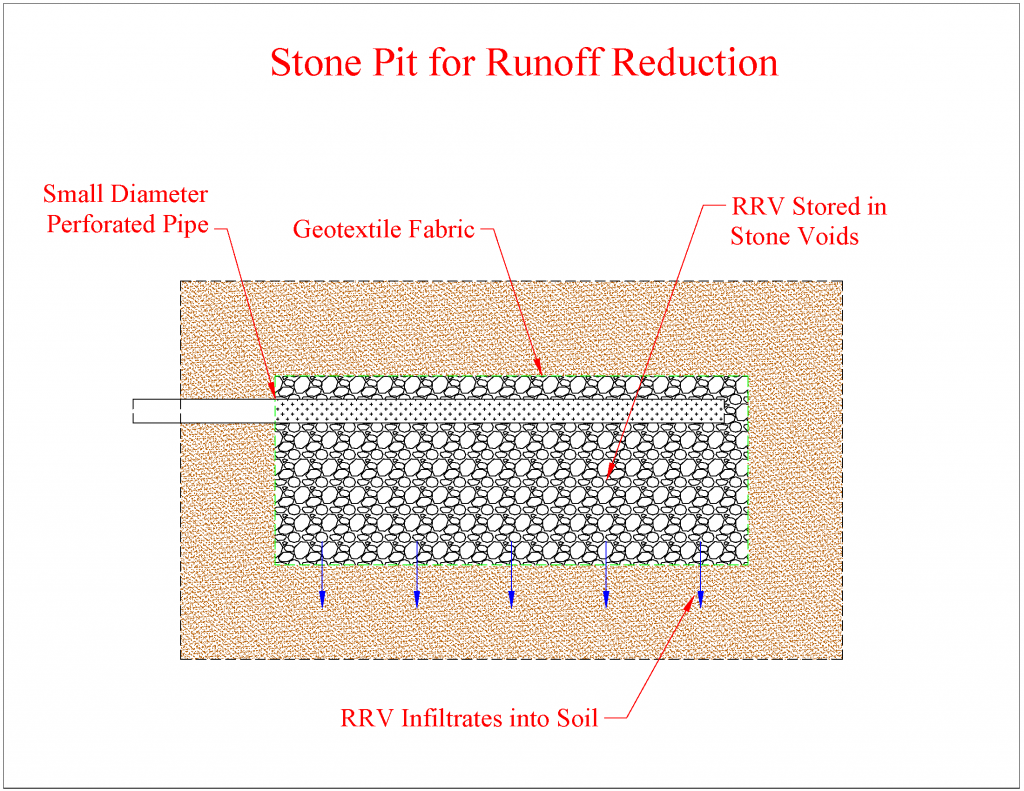
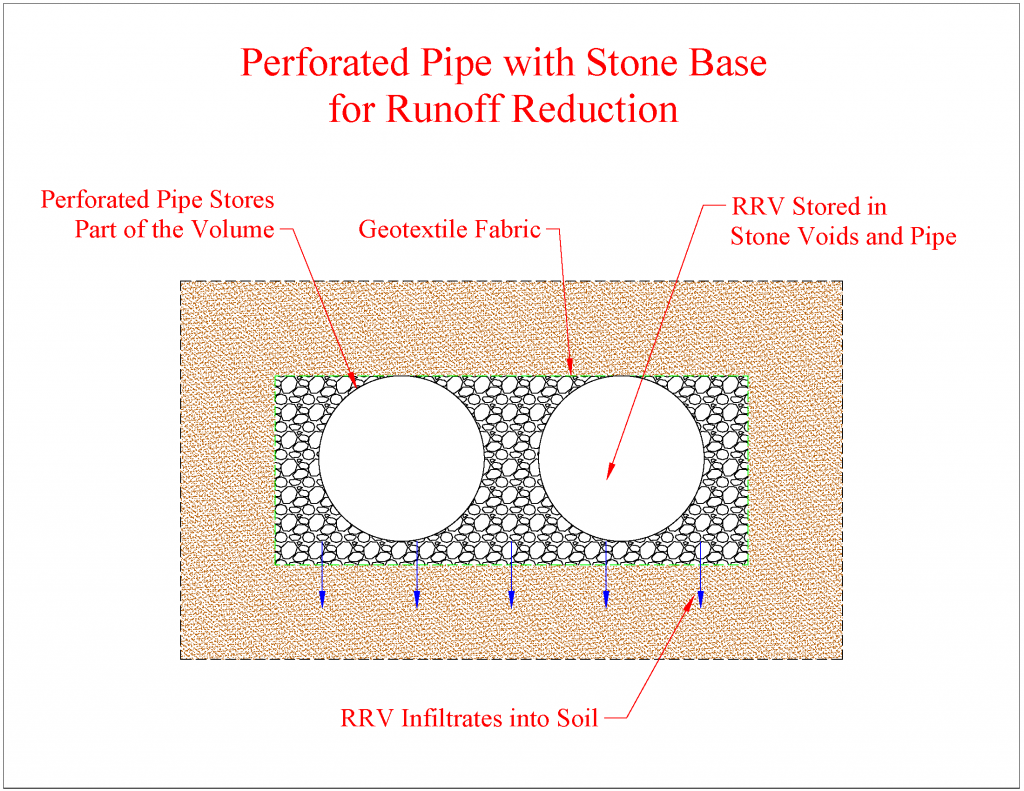
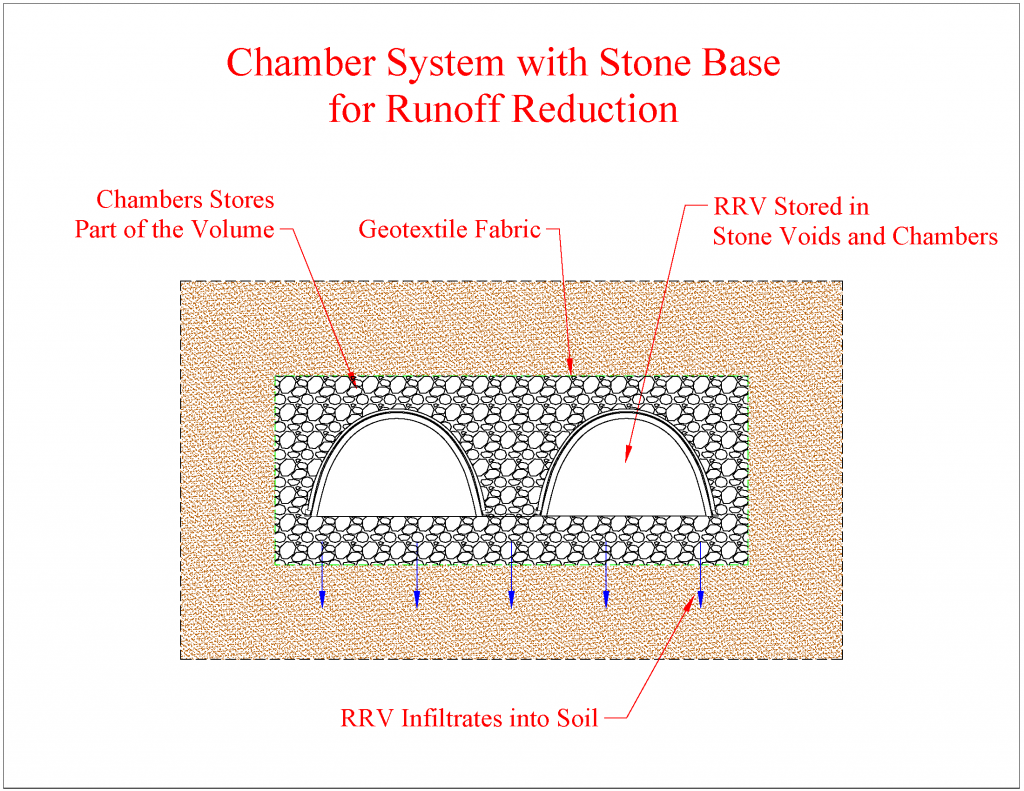
These RRV configurations have one glaring problem – stone is expensive.
Value Engineering RRV Systems
The reason for the putting the reduced runoff volume into the stone voids is to allow the water to infiltrate into the soils below the stone. Storing the volume in the stone voids doesn’t provide any additional benefit to the system, but it does increase the amount of stone used in the system.
The simplest way to reduce the amount of stone needed for an infiltration system is to use perforated pipe or chambers with a minimal amount of stone below the systems. The volume is retained by using a weir wall or a raised outlet pipe.
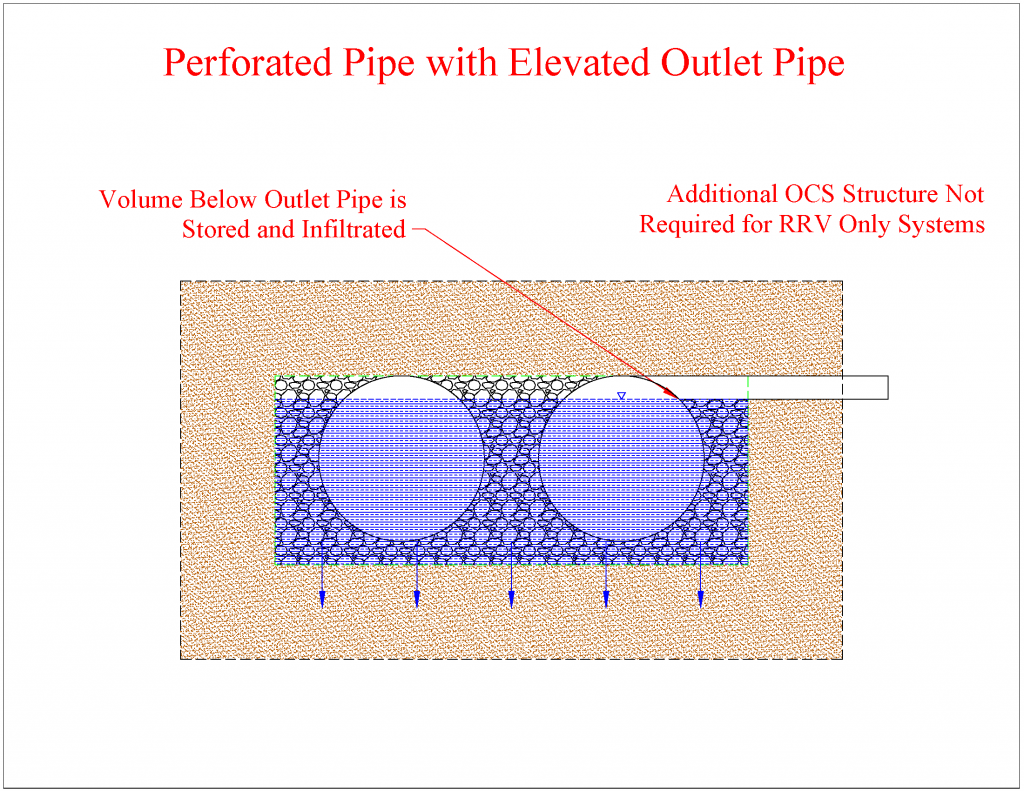
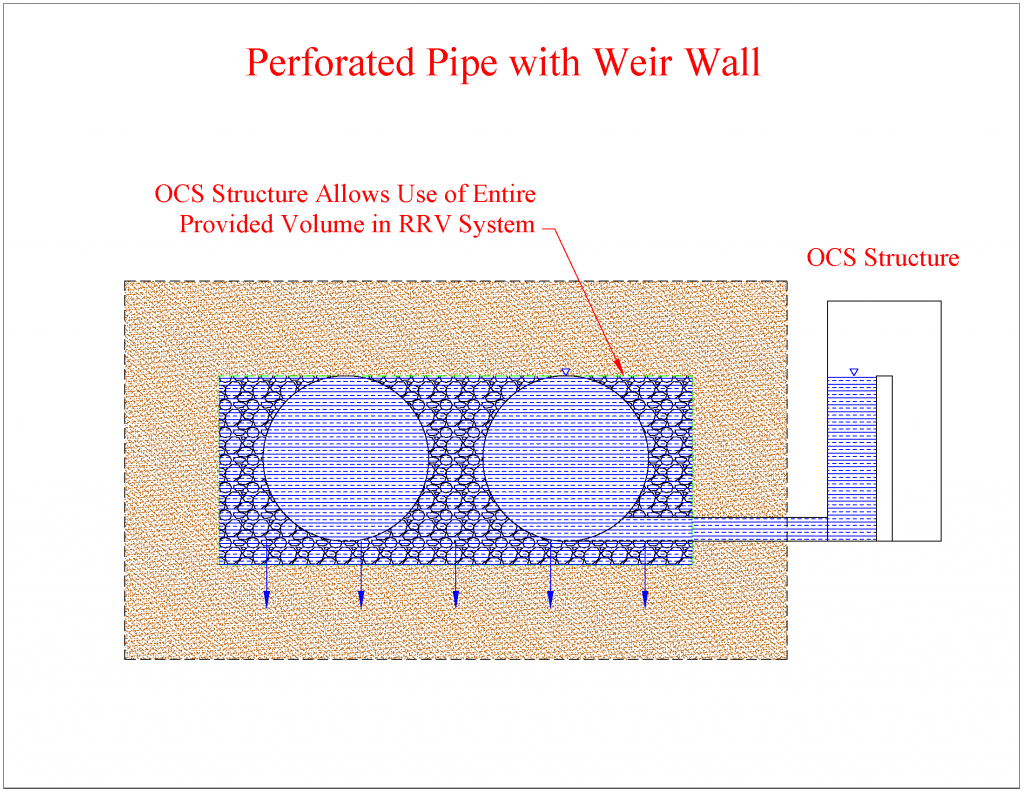

Cost Examples of the Two Design Approaches
Let’s look at an example to compare the two design approaches.
Project requirements:
Required RRV: 9,000 cf
Required detention volume: 27,000 cf
Total system volume: 36,000 cf
Configuration 1: 96” Diameter Perforated Metal Pipe System with Deep Stone Base

Stone envelope dimensions: 436’ long x 10’ wide x 13.2’ deep (2,132 CY)
4,360 sq-ft footprint
434’ of 96” pipe
1,320 CY of stone
Configuration 2: 96” Diameter Perforated Metal Pipe System with Shallow Stone Base

Stone envelope dimensions: 563’ long x 10’ wide x 8.5’ deep (1,773 CY)
5,630 sqft footprint
561’ of 96” pipe
730 CY of stone
Reduction in stone quantity: 590 CY
Reduction in excavation: 359 CY
The stone configuration for your RRV system will dramatically affect the installed cost of the system.
If you are working on a runoff reduction system and have some questions, feel free to contact our engineering team for support.
